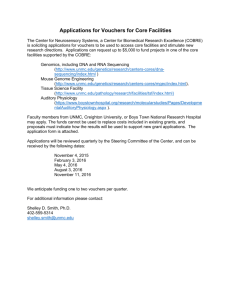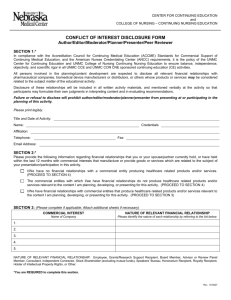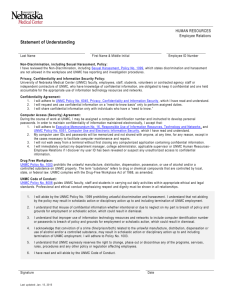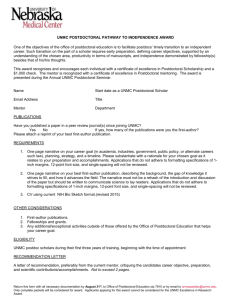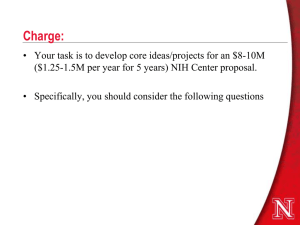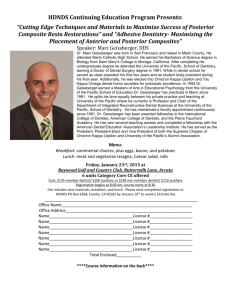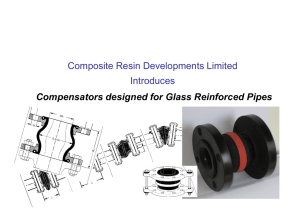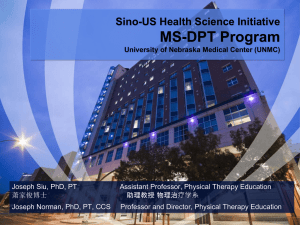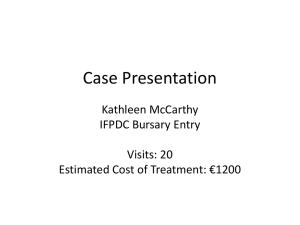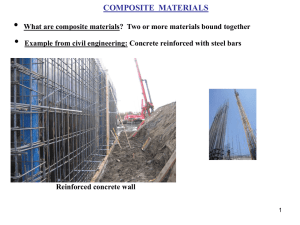Click here to a copy of the agenda in Word for Windows
advertisement
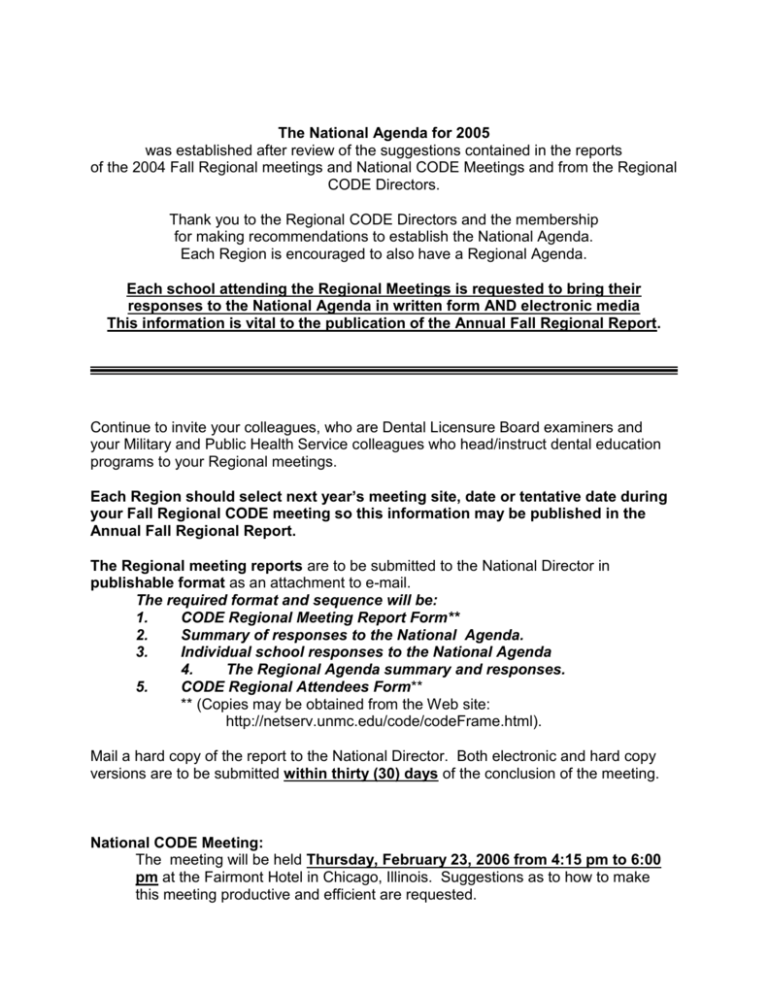
The National Agenda for 2005 was established after review of the suggestions contained in the reports of the 2004 Fall Regional meetings and National CODE Meetings and from the Regional CODE Directors. Thank you to the Regional CODE Directors and the membership for making recommendations to establish the National Agenda. Each Region is encouraged to also have a Regional Agenda. Each school attending the Regional Meetings is requested to bring their responses to the National Agenda in written form AND electronic media This information is vital to the publication of the Annual Fall Regional Report. Continue to invite your colleagues, who are Dental Licensure Board examiners and your Military and Public Health Service colleagues who head/instruct dental education programs to your Regional meetings. Each Region should select next year’s meeting site, date or tentative date during your Fall Regional CODE meeting so this information may be published in the Annual Fall Regional Report. The Regional meeting reports are to be submitted to the National Director in publishable format as an attachment to e-mail. The required format and sequence will be: 1. CODE Regional Meeting Report Form** 2. Summary of responses to the National Agenda. 3. Individual school responses to the National Agenda 4. The Regional Agenda summary and responses. 5. CODE Regional Attendees Form** ** (Copies may be obtained from the Web site: http://netserv.unmc.edu/code/codeFrame.html). Mail a hard copy of the report to the National Director. Both electronic and hard copy versions are to be submitted within thirty (30) days of the conclusion of the meeting. National CODE Meeting: The meeting will be held Thursday, February 23, 2006 from 4:15 pm to 6:00 pm at the Fairmont Hotel in Chicago, Illinois. Suggestions as to how to make this meeting productive and efficient are requested. National Directory of Operative Educators: The CODE National Office maintains the National Directory of Operative Educators as a source for other professionals. It is imperative that the information be as current as possible. To update your university’s directory listing fo th the CODE website, http://netserv.unmc.edu/code/codeFrame.html, and click on the red link, “Please help update,” found under the CODE menu on the left side fo the screen. Make any necessary changes and click “submit form”. Please have each school in your Region update the following information for the National Directory of Operative Educators: School name and complete mailing address Individual names: (full time), phone #, fax #, e-mail address of faculty who teach operative dentistry. (This could be individuals in a comp care program, etc. if there is no defined operative section of department.) Include this information with the Regional Report by mailing a hard copy to the National Office of CODE. All update information received by mail will be forwarded by the National Office to the Webmaster for inclusion on the Web site. Your help and cooperation in accomplishing the above tasks helps save time and effort in publishing the Annual Fall Regional Report in a timely fashion. Thank you, Larry D. Haisch, D.D.S. National Director, C.O.D.E. UNMC College of Dentistry 40th & Holdrege Streets Lincoln, Ne 68583-0750 lhaisch@unmc.edu Office: 402-472-1290 Fax: 402-472-5290 2005 NATIONAL CODE AGENDA (Please cite the evidence were applicable) I. How is “Evidence based teaching and clinical practice in Restorative Dentistry” being introduced? What is the methodology, obstacles, and successes? What informational sources are utilized - text, journal, web sites, other? Please identify and evaluate source(s) and value of source(s). With the speed of change in the profession as to treatment options and multiple material options, who decides that a new product/technology is worthy of inclusion (here today...gone tomorrow)? How are the changes incorporated into the curriculum? How is a balance maintained between teaching what is fundamentally sound and supported, and presenting that which is the newest and latest, but unproven? Revised: 07-18-05 ARD:Staff\CODE\CODE\CODE2005\Natl Agenda 2005 NATIONAL CODE AGENDA II. Does your school teach cuspal replacement with composite in preclinic? What is taught and what is the rational/evidence? Are cuspal replacements with resin composite done in your clinics? What circumstances and parameters or protocol may provide guidance in that determination? What technique is taught to repair an open proximal contact in a newly placed resin composite? What is the evidence for this method? What technique is taught to repair an open proximal contact in an old resin composite? What is the evidence for this method? Are bevels part of routine posterior resin composite preparations? Where? What is the evidence for the bevels and the location? In preparation design, when is it acceptable to leave the facial or lingual wall of a proximal box in full contact with an adjacent tooth? What is the evidence for this? What is the rational/evidence to support the repair versus replacement of defective composite and amalgam restorations? Have schools seen a failure problem with bonded resin composite cores associated with post and cores for anterior teeth? If so, describe and comment. What is the longevity of bonding agents for resin composites and amalgam? Based on the literature, how long can the bond be expected to last in vivo? Respond in context of bonding to various substrates. III. What is your school’s stance on amalgam usage? -2- Revised: 07-18-05 ARD:Staff\CODE\CODE\CODE2005\Natl Agenda 2005 NATIONAL CODE AGENDA What “Best Management Practices (BMP) for amalgam waste” have been implemented at your school? (See ADA web-site: use topic search) IV. What is the progress/status of your school with regard to incorporating caries risk assessment principles into the preclinic and clinical curriculum? (Reference: CODE 2000 Annual Regional Report - posted on CODE web site) http://netserv.unmc.edu/code/codeFrame.html V. Faculty calibration is a fundamental issue that faculties continually struggle with. How do you calibrate faculty with regard to evaluating/grading practical exams, daily clinic work, and clinical competency exams? Have your calibration efforts improved inter-rater agreement between faculty? What outcome measures have you used to track the efficacy of your calibration? Please also respond with emphasis on any innovative, technology-based approaches to calibration that may not have existed in 1999 when this was an agenda item. (Reference: CODE 1999 Annual Regional Report - posted on CODE web site) http://netserv.unmc.edu/code/codeFrame.html -3Revised: 07-18-05 ARD:Staff\CODE\CODE\CODE2005\Natl Agenda 2005 NATIONAL CODE AGENDA Regional CODE Agenda To be established by the respective Region and Regional Director. Please also report on responses to the Regional Agenda from all participants. Is there Regional interest in discussing the two developing U.S. National Clinical licensure examinations? (Reference: ADA news, July 11, 2005; Vol 36, No.13) Suggestions for CODE. What can the organization do to improve its effectiveness? What is suggested to improve the Web site? http://netserv.unmc.edu/code/codeFrame.html Other comments? -4Revised: 07-18-05 ARD:Staff\CODE\CODE\CODE2005\Natl Agenda

